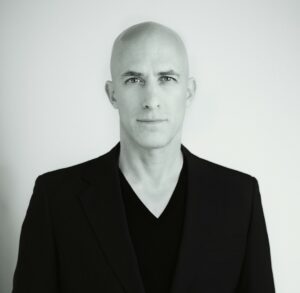
IDA 2023 Architectural Design of the Year
Can you briefly tell us about your background and what inspired you to pursue architecture?
I was a French horn player growing up. I loved classical music’s tension between intellectual and expressive demands and its paradox of performing precision with emotion. As an undergraduate, I balanced a major in philosophy with studio art and art history; in hindsight, I was searching for that same tension. Although I found philosophy compelling, I always yearned for it to have a more practical application to the world around me. In my junior year, to get relief from studying Hegel with Rüdiger Bittner, I took a sculpture class with Erwin Hauer (during which I had to obsessively replicate a massive whalebone in clay) and a modern European architecture course with Esther da Costa Meyer (where were you when you first discovered Mies?). All three were extraordinary, passionate teachers. I was never happier than amidst the mash-up of worlds to which they were simultaneously exposing me. In that moment, I realized one could combine philosophy’s intellectual rigor with art’s expressive nuance to make architecture that is not just a representational art but literally empowers people in the practice of their everyday lives.
What drove you to submit your work to the IDA competition, and your thoughts on how winning this competition impacted your artistic journey?
The IDA competition is a rare opportunity to have one’s work evaluated beyond the confines of one’s particular creative silo, by peers throughout the design world.
Could you describe any challenges you faced while working on your winning project?
I have been a New Yorker since 2000 and lived painfully close to the World Trade Center on September 11. It was imperative for me that our studio give full measure in designing the building that would embrace the restorative power of art as the keystone and final public element in the World Trade Center master plan. A producing house for music, theater, dance, opera, and film, the Perelman Performing Arts Center pioneers new forms of theatrical adaptability to amplify the creativity of its artists, and surprise patrons with new arrival and viewing experiences upon each visit. The building’s pure form—rotated and elevated to accommodate complex below-grade constraints—is wrapped in translucent marble. By day, the volume is an elegant, book-matched stone edifice acknowledging the solemnity of its context. By night, this monolith dematerializes, subtly revealing the creative energy inside.
What, in your opinion, are the most important factors in creating great architecture?
Integrity, in your relationships, in your ideas, in your details, and in your self-awareness.
What do you find to be the most challenging aspect of architecture?
Communication. I tell my students ad nauseam, “You will only build that for which you can compellingly advocate.” Architectural pedagogy typically does not emphasize enough the importance of clear, concise, and convincing communication.
What motivates and drives your work?
As stated above, I believe architecture should actively empower its users and communities, not simply be a representational art. We, therefore, challenge and advance building paradigms and promote the agency of architecture. This ethos guides our studio’s aspiration to produce inventive designs so functionally specific that they offer new and inspiring aesthetic experiences.
What’s next for you in your career as an architect?
I love what we do, as we currently do it. Unless, for some unforeseen reason, it ceases to intrigue and excite me, I hope to continue on as we are.